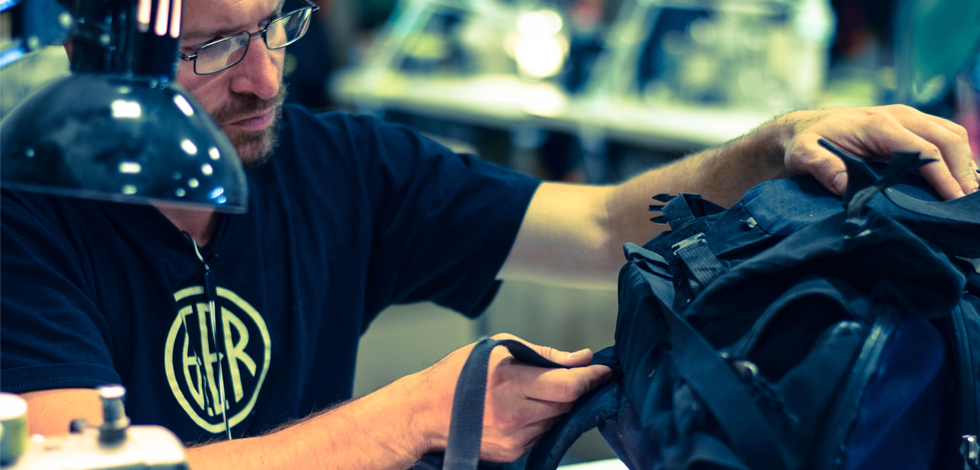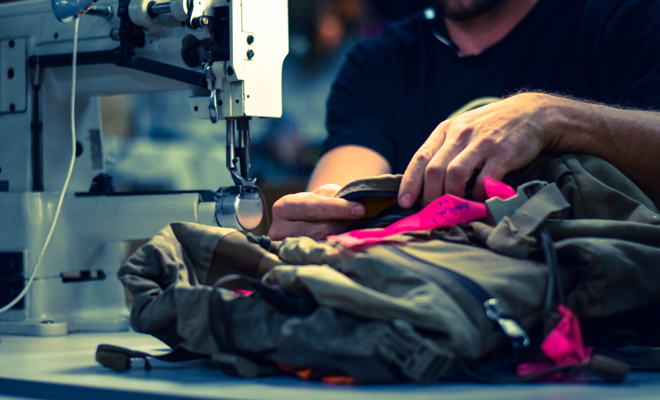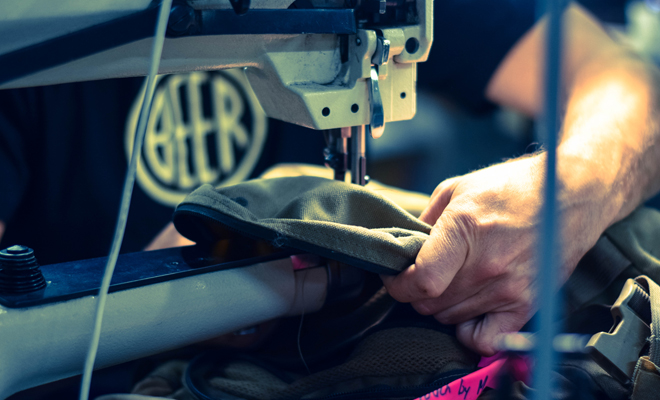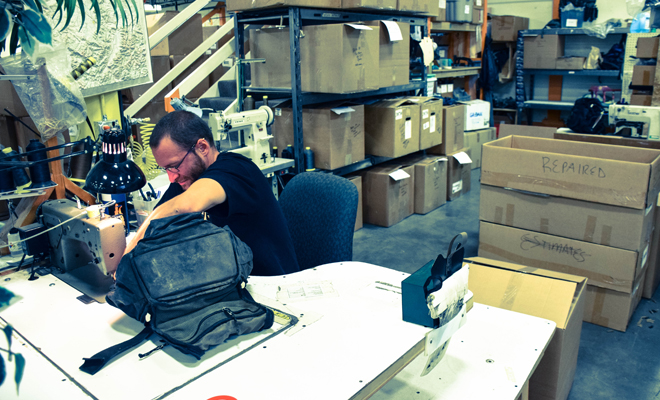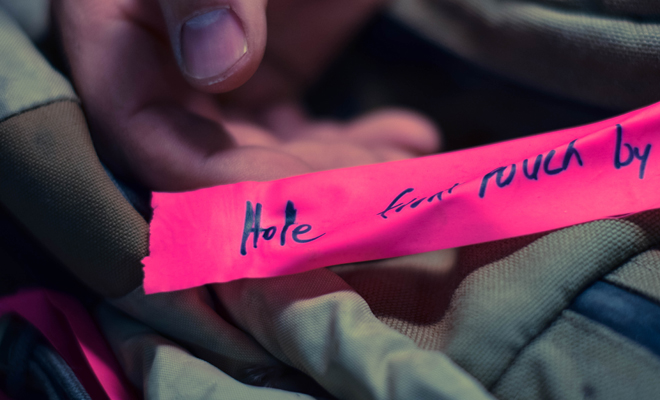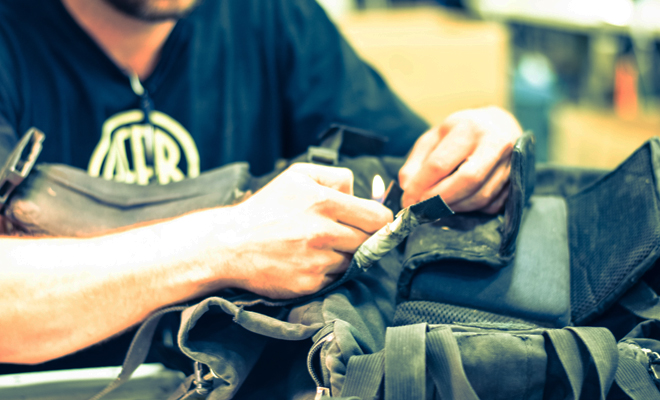Carry Ageing :: with Kletterwerks
When you’ve got a lifetime warranty on your gear, you’re bound to see waves of aged carry limp back through your door. And, over the years, Kletterwerks have seen their fair share. So we thought they’d be the perfect subjects to have a pow wow with about well-loved carry. Hence, we reached out and picked the brain of Ben Nobel…
What are your top tips for how our readers can pick a bag that will age well, from one that won’t?
Well, I think there is a big difference between buying something that is made of a fabric that ages well, and buying something that is actually built well. Canvas, leather and Nylon all age well – as witnessed by hundreds of brands out there. But if it isn’t built well – what’s the point? The fabric on your bag, jacket, paniers, whatever, won’t have enough time to begin to age if your stitching isn’t bulletproof, and never underestimate the stuff you don’t see – foams, ribboning, back tacks. If you want to buy something that hopefully one day will look like your granddad’s, make sure it will hold up long enough for that process to even begin to happen.
Where are the major issues with most carry product you see?
I’d say let’s divide this into two categories – technical products vs. heirloom products.
Heirloom products typically made from heirloom materials – leather, canvas (even Cordura) for example, have history to prove those materials work for their intended use. They function well, they stand up to significant abuse, and they age well.
Technical products that compete for market share in this modern world of lightweight fabrics and super alpinism, unfortunately have not had enough time in the field to really give the user (or manufacturer for that matter) significant long term trust. Now that’s OK for some people, and the businesses making those products know their market.
Our solution? Combine the two. Fabric is out there, and only getting better. Foams, buckles, webbing – all if it is experiencing significant increases in function and longevity. But in the end, knowing what is going to fail first is paramount. We’ve been in the game for 40 years and spent the majority of that time focusing on wear points. The Military and Fire Fighters have helped with this tremendously. If a seam blows out, you know pretty quickly you’ve missed an immediate requirement. But shoulder pad foam, bag bottoms, and webbing should all get substantial attention – keeping in mind that a bag, for example, still has a primary function [carry] so if it isn’t comfortable, that’s an issue.
Any tips on cleaning packs? Good ways to restore their shine?
Our work with the hunting market definitely brought this question up a lot over time – as blood isn’t easy to clean up. Our fabric, for example, is all coated with PU or Teflon and treated with a DWR finish for water resistance. Harsh cleaning chemicals tend to break down coatings quickly – so we try to avoid them at all costs. Plus, stalking elk with a pack that smells like 401 is the quickest way to be back in your truck empty handed. DIY carwash with a high pressure rinse seems to be the best way, and dry it in the shade to avoid too much UV. If you do need to get that shine back, Nikwax is a good place to start.
Do you see many modifications and hacks on bags coming back for repair?
I suppose this is a good place to comment on our repair department. We’re currently operating out of 5 factories in the United States and 1 in the Philippines and as some of you may know, we offer a full lifetime guarantee on anything we build. Any product that gets sent in for warranty comes to Bozeman and is handled by Jeff, our repair tech (he’s the cool dude in all the photos). All products, from all factories, in all divisions, get mended by Jeff. We joke a lot that he doesn’t have enough work, but in all seriousness, we only have 1 repair guy.
As for modifications – we typically don’t see too many. And we are on the tailing end of our ability to do anything custom (those were fun days, kind of a pain in the ass, but fun). Hunter’s typically have some interesting ideas on how to carry weapons with a fully packed bag of boned meat – of which we typically try to consider feedback from the field as opportunistic. By far the most interesting feedback from the field would more so be centered around how to carry something out of the ordinary – like your buddy who broke his leg. Or a fish shocker. Or a Keg.
We can imagine ageing well for 2 years is different to ageing well for 20 years. What’s needed for a carry piece to age well for 20 years?
Again, I think this goes back to the basic idea of quality. My dad bought this Barbour coat in London 1982, the year I was born. He came to Montana recently to visit and he brought it with him. It had 3 decades of use and thousands of trips – all stored in every crease and tear. But overall, the thing was perfect. All the seams were intact, no stitching was damaged, and the fabric still seemed relatively water resistant. Now, that’s a jacket, but still – the point is that piece was built to last. Hardest part really is picking the right color because you’d better still like it in 20 years.
Any examples of carry pieces that you think have just got way more beautiful with age and use?
Since our inception in 1975, we’ve been based in Bozeman, and I can’t tell you how many people have walked through the doors with vintage Kletterwerks, Mojo Systems, Quest, Dana Design or even early Mystery Ranch The Works pieces. And perhaps the most unique thing about that, the majority of those bag owners bought it themselves. Dana Design was so hugely influential in the Rockies that when we launched Kletterwerks – hundreds of people wrote in to the website telling stories about their original Dana bags they bought in the 80’s to climb Denali, trek in the Himalaya, or go on a NOLS trip. It has been a great honor to hear and see hundreds of old climbing packs still in the field today – albeit faded fluorescent.
We have a few gems here in the archives – one of Alex Lowe’s climbing packs from probably 1976. The first Montana Powder Guides packs made for Lonnie Ball in the early 80’s. Bridger Bowl and Big Sky Ski Patrol Bomb Packs still with explosive residue. And even without decades of abuse, seeing a pack that was worn on the fire line for a few seasons – incrusted with dirt and burnt to a crisp has this honorable feeling and look of hard work. Something we take great pride in. Sure its rendered unusable, but witnessing what our products go through in their average lifecycle down range has a certain aesthetic that is hard to compare.
Is ‘patina’ a word used or loathed in your repair circles?
I suppose to some extent it depends on your definition of Patina. In the fabric world, it isn’t used much, but I am sure someone, somewhere has fit it in as a descriptor. If blood, sweat and dirt count as patina then I suppose we would have to choose loath – because beating the shit out of a bag doesn’t need to be analyzed much more that your bag is beat to shit. Am I allowed to swear?
Sure! Haha.
So, lucky last: raw denim spreads color like a fiend. Have you started to see blue stains on more product in recent times?
Well, honestly, I bet if you polled a group of Montanans, most of them would have never heard of raw denim. It’s not a major trend out here – most of us wear Levis or Wranglers. I’ll have to ask this one to the public…Anyone?





 Carry Awards
Carry Awards Insights
Insights Liking
Liking Projects
Projects Interviews
Interviews
